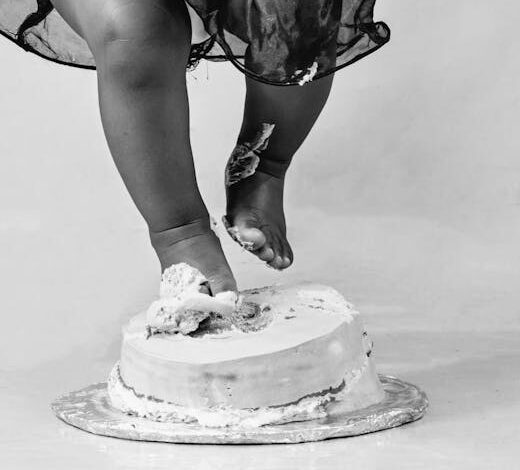The Cornucopia Conundrum: A Glimpse into Collective Memory

Imagine finding a humble t-shirt at a secondhand sale, made of 100% cotton in Myanmar, and then listing it on eBay for over two thousand dollars. Sounds outlandish, right? Yet, this isn’t about haute couture or rare fabric. It’s about a tiny, embroidered detail on a familiar tag: the Fruit of the Loom logo. Specifically, the lingering, contentious question of whether it once featured a woven brown horn of plenty – a cornucopia.
For many of us, Fruit of the Loom underwear and tees have been a wardrobe staple for decades. We’ve seen that logo countless times. So, why does a 2022 YouGov poll reveal that 55% of Americans believe the logo does include a cornucopia, with only 21% correctly stating it doesn’t? And why does a young reseller like Brooke Hermann confidently eye a shirt, believing her find features that exact horn? This isn’t just a quirky brain glitch; it’s a deep dive into what we call the “Mandela effect,” or collective false memory.
Named after the widespread, incorrect memory of Nelson Mandela dying in prison, this phenomenon highlights the perplexing fallibility of human memory. It’s the reason why some steadfastly recall Darth Vader saying, “Luke, I am your father,” or swear that the beloved children’s books were titled “The Berenstein Bears.” But the Fruit of the Loom cornucopia? That one seems to hold a particularly strong, baffling grip on our collective consciousness.
The Cornucopia Conundrum: A Glimpse into Collective Memory
The stark reality, according to Fruit of the Loom themselves and fact-checking sites like Snopes, is that their logo has never, ever included a cornucopia. And yet, for a significant portion of the population, this truth feels profoundly wrong. This isn’t just about a few confused individuals; it’s a shared misremembering that defies easy explanation, sparking robust online communities dedicated to uncovering the “truth.”
For individuals like AJ Booras, a 51-year-old “Fruit of the Loom truther” from Massachusetts, this isn’t a casual internet meme. It’s a personal quest for vindication that has, by his own admission, ostracized him from his family. He, and many others, are not content with the simple explanation that human memory is fallible. They seek deeper answers, ranging from corporate gaslighting to glitches in a simulated reality.
The “Mandela effect” isn’t merely a passing internet trend. While Google searches for the term may have plateaued from their 2016 peak, online communities persist. A Mandela effect subreddit still draws over 170,000 weekly visitors, generating thousands of comments daily. These aren’t all skeptics; many are dedicated believers, determined to reconcile their vivid memories with a reality that insists they’re mistaken.
Unpacking “Residue”: When Echoes of Memory Appear in Reality
One of the most compelling aspects of the Fruit of the Loom cornucopia theory is the concept of “residue.” This term refers to apparent “evidence” in the real world that seems to support the false memory. And for the cornucopia, there’s an astonishing amount of it.
Consider the 2006 animated film *The Ant Bully*, which features a parody “Fruit of the Loin” underwear tag—complete with a cornucopia. Or a 2012 *South Park* episode that jokingly names a fake clothing brand “Cornucopia.” In 1973, jazz flutist Frank Wess released an album called “Flute of the Loom,” its cover depicting fruit pouring from a cornucopia-shaped flute. The illustrator reportedly stated the clothing logo inspired the design, asking, “Why the hell else would I have used a cornucopia?”
Beyond pop culture, numerous newspaper and magazine articles from the 1970s to the early 2000s reference the horn of plenty in relation to Fruit of the Loom. A 1968 play and a 1992 novel, *The Brothers K*, also include cornucopia mentions. New “residue” continues to emerge, like a TikToker in 2023 unearthing a ’90s trivia game card for Fruit of the Loom that lists “cornucopia” among its clues. How can so many disparate creators have made the exact same mistake?
The Science of Memory: Why Our Brains Play Tricks
Wilma Bainbridge, an associate psychology professor at the University of Chicago, researches “the bridge between perception and memory.” Her 2022 study on visual Mandela effects found surprising consistency in what people misremember. “People’s memories are surprisingly predictable,” she notes.
Her experiments reveal that even those unfamiliar with an image can share false memories with those who claim high familiarity. For instance, people consistently misremember the Monopoly man wearing a monocle. Even when shown the correct image without one, many would later draw him with it. This suggests an intrinsic quality to certain images that predisposes us to memory errors, not just a failure of recognition.
Scientists have long established that human memory is inherently fallible. Studies from the 1990s showed that over 60% of participants claimed to have seen news footage of a specific plane crash, even though no such footage exists. Our memories can be corrupted by peers, and false memories can be contagious. The internet, with its viral memes and discussions, has arguably become a powerful engine for this “memory contagion” in the Mandela effect, dramatically spiking searches for “Fruit of the Loom cornucopia” after online discussions.
Beyond Memory: Simulation, Multiverses, and the Quest for Vindications
For those deeply invested in the Mandela effect, memory fallibility simply isn’t a satisfying explanation. AJ Booras recalls asking his parents as a child, “Is that a loom?” only to be told, “No! That’s what we call a cornucopia.” He remembers the logo changing around the late ’90s from fruit with a cornucopia to just a pile of fruit. This isn’t just a hazy recollection; it’s a specific, anchor memory for him.
When psychological and memory science explanations left him cold, AJ turned to quantum mechanics and metaphysics. He, like many in the online community, posits ideas like the simulation hypothesis – the notion, floated by philosopher Nick Bostrom and even considered by Neil deGrasse Tyson (before he changed his mind), that we might be living in a computer simulation. “In simulation, anything can happen,” AJ suggests, wondering if “different servers” or “failed software updates” could account for disparate realities.
Another popular theory among believers is the multiverse concept, where people might be traveling between parallel universes, carrying memories from different worlds. However, when theoretical physicists like Carlo Rovelli, David Deutsch, and Sean M. Carroll are asked about these quantum physics explanations for the Mandela effect, their responses are unequivocally dismissive. Rovelli famously stated, “They are all total bullshit!” Bainbridge’s research, too, casts doubt on multiverse jumps, showing that people can develop false memories of images within moments, making sudden dimension shifts unlikely.
The Psychology of Conviction: Why Some Hold On and Others Let Go
The journey from personal recollection to firm conviction is complex. As the author of the original article, Amelia Tait, noted, even she initially misremembered the Fruit of the Loom logo having a cornucopia, later realizing it was likely the brown leaves (recolored green in 2003) that her ten-year-old self misinterpreted. The very design, a crowded cluster of fruit, can still trigger that visual misinterpretation today.
Why do some, like musician Larry Jung, ultimately accept that their memory might be flawed and move on, while others, like AJ, dedicate a decade to the quest for vindication? Stephan Lewandowsky, a cognitive psychologist, explains that most people have an “exaggerated sense of the accuracy of their own memories.” Memory isn’t a perfect recording device; it’s a “reconstructive apparatus” that pieces together fragmented snippets. When this reconstructed memory conflicts with reality, some find it deeply unsettling.
Shauna Bowes, an assistant psychology professor, highlights intellectual humility as a key factor. People who are more cognitively flexible, humble, and open-minded are more likely to change their minds in response to contradictory evidence. Conversely, “belief perseverance” — doubling down on beliefs despite evidence — can be fueled by personality traits, social networks, and a distrust of societal institutions. For some, a conspiracy can even become part of their identity, making it incredibly difficult to escape that “rabbit hole.”
The Human Mind: The Ultimate Mystery
The Fruit of the Loom cornucopia saga is more than just a debate over a logo. It’s a compelling look at the intricacies of human memory, the power of collective belief, and the fascinating ways we construct our individual and shared realities. While science offers robust explanations for memory fallibility and the spread of misinformation, the deeply personal and often emotionally charged experiences of Mandela effect believers cannot be easily dismissed.
Perhaps the biggest mystery isn’t a missing horn of plenty, a glitch in the Matrix, or a jump between parallel universes. Perhaps the greatest enigma lies within our own minds: how we perceive, how we remember, and why some memories hold such an unshakeable grip, even when confronted with overwhelming evidence to the contrary. Whether it’s a testament to the unpredictable nature of our brains or the amplifying power of social phenomena in the digital age, the cornucopia effect serves as a powerful reminder that our reality is often far more subjective than we dare to imagine.





